Tirzepatide is a drug approved for medical use in the United States, European Union, Canada and Australia for the treatment and control of type 2 diabetes mellitus. As a dual GIP and GLP-1 receptor agonist, it is the first of its kind.
What is Peptides Tirzepatide?
Tirzepatide is a linear polypeptide composed of 39 amino acids that has been chemically modified by lipylation to improve its uptake into cells and metabolic stability. In structure, Tirzepatide is an analogue of GIP. Fatty acids are attached to the base of GIP, thus having a longer half-life and higher affinity with albumin.
Tirzepatide is a new type II diabetes drug. As an analog of GIP, Tirzepatide plays the similar role of GIP. At the same time, it is also a GLP-1 receptor agonist, which has the dual effects of lowering blood glucose and promoting gastrointestinal function, as well as promoting weight loss.
Tirzepatide is a linear polypeptide composed of 39 amino acids that has been chemically modified by lipylation to improve its uptake into cells and metabolic stability. In structure, Tirzepatide is an analogue of GIP. Fatty acids are attached to the base of GIP, thus having a longer half-life and higher affinity with albumin.
Tirzepatide is a new type II diabetes drug. As an analog of GIP, Tirzepatide plays the similar role of GIP. At the same time, it is also a GLP-1 receptor agonist, which has the dual effects of lowering blood glucose and promoting gastrointestinal function, as well as promoting weight loss.
What is GLP-1?
Glucagon-like peptide-1 (GLP-1) is a gastrointestinal hormone that promotes insulin secretion. It has the ability to reduce blood glucose levels in a glucose-dependent manner by enhancing insulin secretion.
Natural GLP-1 is usually secrete in the gut after eating. It is susceptible to amidation and proteolytic cleavage and is broken down rapidly in the body, resulting in a known half-life of about 2 minutes. As a result, only 10% to 15% of GLP-1 enters the cycle in its entirety. To overcome this problem, They develop GLP-1 receptor agonists to increase GLP-1 activity.
By activating GLP-1 receptor or prolonging the action time of GLP-1, GlP-1-based therapeutic drugs have the multi-effect mechanism of promoting β-cell generation and secretion of insulin, inhibiting α-cell secretion of glucagon, delaying gastric emptying and inhibiting appetite. To control blood sugar levels. At the same time, GLP is glucose-dependent and does not cause severe hypoglycemic symptoms.
What is GIP?
GIP, glucose-dependent insulin promoting polypeptide, also known as Gastric inhibitory polypeptide, is a hormone that stimulates insulin release from the pancreas.
GIP also protects the small intestine from acid damage by reducing the secretion of stomach acid, reducing the speed at which food is transported through the stomach.
GLP-1 and GIP
Both GLP-1 and GIP improve blood sugar control and body weight by activating their respective receptors, stimulating insulin secretion, inhibiting stomach acid, gastric emptying, and appetite.
The main differences between GLP-1 and GIP are as follows:
- GLP-1 has a wide range of receptors, which are distributed in pancreatic β cells, brain, cardiovascular, etc. GIP receptors are mainly found in pancreatic β cells and adipose tissue.
- GLP-1 can directly inhibit gastric emptying and appetite, and the effect of GIP is weak.
- The effect of GLP-1 on insulin secretion was stronger than that of GIP, and the effect of GIP on β-cell promotion was stronger than that of GLP-1.
- Hypoglycemia is difficult to occur after the use of GLP-1, but GIP can lead to hypoglycemia.
When used in combination with GLP-1 receptor agonists, GIP can produce synergistic effects to have a greater impact on metabolic markers such as body weight, glucose and lipids, and play a greater role in the treatment of diabetes.
The affinity of Tirzepatide to GIP receptor is greater than that of GLP-1 receptor, because Tirzepatide is an analogue of GIP, and the affinity of Tirzepatide to GIP receptor is approximately equal to that of natural GIP to GIP receptor. The binding affinity of GLP-1 receptor is weaker than that of natural GLP-1 binding to its receptor.
How Tirzepatide use for Type 2 Diabetes?
The incidence of type 2 diabetes has been on the rise worldwide in recent years, with about 420 million adults worldwide, 30 million people in the United States and 114 million people in China having type 2 diabetes. Globally, one person dies every six seconds from complications related to type 2 diabetes. Type 2 diabetes is the eighth leading cause of death in the world.
Obesity and overweight are important risk factors for type 2 diabetes, and about 80-90% of type 2 diabetes patients are overweight or obese.
Type 2 diabetes mellitus, also known as non-insulin-dependent diabetes mellitus, is a chronic metabolic disease characterize by pancreatic beta cell dysfunction and insulin resistance. Treatment for this disease focuses on controlling blood sugar, improving insulin resistance and protecting pancreatic beta cell function. The main methods are insulin therapy, oral hypoglycemic drugs, diet control and exercise.
Tirzepatide for Weight Loss
The study found that people who were overweight or obese had a reduced effect on incretin. Overweight and obese people are more than 10 times more likely to develop type 2 diabetes than people of normal weight.
As diabetes weakens the use of glucose by cells, the body produces more free fatty acids, which will increase the risk of weight gain and obesity in diabetic patients.
The treatment of diabetes is usually based on weight management and centered on blood sugar control. So diabetes and obesity have intrinsic physiological connection and mutual promotion. Most of the time, diabetes and obesity co-exist and disappear together, which is probably why most drugs used to treat diabetes help with weight loss.
So can Tirzepatide, a drug approved by the FDA to treat diabetes, be used for weight loss?
I think the answer is yes.
Tirzepatide Weight loss Test
Phase 3 trials of Tirzepatide demonstrated its weight loss effect.
The trial, conducted at 119 sites in nine countries, involved more than 2,000 non-diabetics with a body mass index of 30 or above, or 27, and at least one weight-related complication who received weekly subcutaneous injections of 5mg,10mg, 15mg, or placebo, as well as a lifestyle intervention.
After 72 weeks, participants who received 5mg of Tirzepatide weekly lost an average of 15 percent of their body weight. 85.1 percent lost 5 percent of their body weight and 68.5 percent lost more than 10 percent of their body weight. Those who lost more than 15 percent of their body weight accounted for 48 percent of the total. Thirty percent lost more than 20 percent of their body weight.
Participants injected with 10mg of Tirzepatide weekly lost an average of 19.5 percent of their body weight. Among them, 88.9% lost 5% of their body weight and 78.1% lost more than 10%. Those who lost more than 15 percent of their body weight accounted for 66.6 percent of the total. 50.1 percent of them lost more than 20 percent of their body weight.
Participants injected with 15mg of Tirzepatide weekly lost an average of 20.9 percent of their body weight. 90.9 percent lost 5 percent of their body weight, and 83.5 percent lost more than 10 percent. Among them, 70.6 percent lost more than 15 percent of their body weight. 56.7 percent lost more than 20 percent of their body weight.
Participants who received the placebo and the lifestyle intervention lost an average of 3.1% of their body weight. Among them, 34.5 % lost 5 % of their body weight and 18.8 % lost more than 10 %. Those who lost more than 15 % of their body weight accounted for 8.8 % of the total. Among them, 3.1 % lost more than 20 % of their body weight.
Tirzepatide Weight loss Test Result
It can be seen from the experimental data that the weight loss of the subjects using Tirzepatide is dose-dependent.The higher the dose, the more weight loss.
A weight loss of 5 percent or more has long been considered the threshold for clinically meaningful improvements in metabolic health. In the trial, 89% to 91% of subjects who received 10mg and 15mg of Tirzepatide met this benchmark.
This experiment fully demonstrated the effect of Tirzepatide on weight loss.
How does Tirzepatide realize weight loss?
Tirzepatide is a dual GLP-1 and GIP receptor agonist. It can stimulate more insulin in pancreatic beta cells, inhibit the release of glucagon in pancreatic alpha cells, delay gastric emptying, inhibit appetite, improve gastrointestinal function, and affect energy metabolism, thus reducing body weight. It can be divided into the following aspects.
Suppress appetite. Tirzepatide can simultaneously activate GLP-1 and GIP receptors, promote the secretion of various hormones related to satiety and appetite regulation, and directly act on the hunger center of the central nervous system to produce satiety and reduce appetite, thus inhibiting eating and reducing calorie intake.
Delay gastric emptying. Tirzepatide activates the GLP-1 receptor, which inhibits gastric acid production and delays gastric emptying, which reduces calories at each meal and indirectly reduces appetite.
Increase energy expenditure. Tirzepatide can activate AMPK and other signaling pathways, improve the consumption and utilization of glucose and fat, and increase the generation and activity of brown fat, so as to improve the basal metabolic rate and overall energy consumption, resulting in a negative energy balance where consumption exceeds intake, thus achieving the effect of weight loss.
It affects melatonin. Studies have shown that GLP-1 can inhibit the activity of hypothalamus, and then affect the secretion of melatonin. Can further enhance energy consumption, achieve the purpose of weight loss.

Tirzepatide vs Semaglutide Weight Loss
They are both GLP-1 agonists, and both are FDA-approved for the treatment of type 2 diabetes, but differ in their efficacy in weight loss.
Tirzepatide is a dual GLP-1 and GIP receptor agonist, which activates both GLP-1 and GIP receptors to produce synergistic hypoglycemic and weight loss effects. Semaglutide is a selective GLP-1 receptor agonist that acts primarily by activating GLP-1 receptors.
Clinical studies showed that Tirzepatide 6mg and 8mg doses resulted in weight loss of 8.8-15.3kg(8.1-9.5%) and Semaglutide 2.4mg doses resulted in weight loss of 4.3-8.4kg(3.7-8.8%).
Tirzepatide showed a stronger weight loss effect than Semaglutide, which may be related to the wider range of receptors it acts on.
However, FDA approve Semaglutide, to treat type 2 diabetes, for weight loss, while Tirzepatide is a new drug only approve for Type 2 diabetes and not for weight loss.
FDA approve the higer dose Semaglutide as a weight loss drug. Tirzepatide trails prove it works well on weight loss and may be subject to FDA approval at a later stage.
Peptides Tirzepatide weight loss dose
The dose of Tirzepatide to treat type 2 diabetes is range from 2.5mg per week to a maximum dose of 15mg per week.
Before the use, the initial dose is usually 2.5mg per week, and after 4 weeks, increase to 5mg per week. Then, depending on the control of blood sugar, increase the dosage by 2.5mg each time, and the maximum dose is not more than 15mg per week.
Because Tirzepatide not officially use for weight loss, there is no dose information available. In Phase III trials, Tirzepatide doses for weight losse are 5mg, 10mg, and 15mg , and the higer dose, the effect become more significant. More than 10mg of Tirzepatide can suppress appetite more significantly. Therefore, when use Tirzepatide for weight loss, doses above 10mg can produce more significant and lasting weight loss. It is important to note that regardless of which dose you choose to use for weight loss, you need to start at the lowest dose and increase the dose every 4 weeks at 2.5mg each time until reach the target dose.
Note:
- Perform Subcutaneous injection on the abdomen, thigh or upper arm, and change the injection site each time.
- Injected it once a week at any time of day, before or after meals.
Tirzepatide Side Effects and Treatment Methods
Almost every drug has side effects, including diet pills. Diet drugs are usually gastrointestinal drugs that mimic hormones produced by the gastrointestinal system. Therefore, side effects associated with weight loss products are more related to the gastrointestinal tract. Many people experience nausea, and some experience vomiting, diarrhea or constipation.
In studies, diarrhea and nausea often occurred in the initial phase or during increased dosages, and these side effects were usually short-lived and dissipated over time. Other possible side effects include allergic reactions, gallbladder problems, and hypoglycemia.
Nausea and Vomiting
Nausea is the most common side effect of Tirzepatide, with as many as 18 percent of people in clinical trials reporting experiencing it.
Vomiting is less common, but it can still happen. Most of these side effects occurred after first using the drug or after increasing the dose.
To prevent or reduce nausea and vomiting, you can start with Tirzepatide at a low dose and wait for your body to become tolerant before gradually increasing the dose. If you do experience these side effects, they should get better or go away over time.
Eating small meals and avoiding fatty foods can help reduce or prevent nausea and vomiting while your body adjusts to Tirzepatide.
Diarrhea
Diarrhea is another common side effect of Tirzepatide. As many as 17 percent of people experience this in clinical trials. It also happens at the beginning or when the dose increases, and as the body ADAPTS to the drug, the symptom will improve.
Persistent diarrhea can lead to dehydration and, in severe cases, kidney problems. You need to keep hydrated.
Anorexia
Tirzepatide slows down digestion and increases feelings of fullness, so you face a loss of appetite, which can help you lose weight.
Reworking a proper eating plan and adjusting your diet can relieve symptoms and help you lose excess fat.
Hypoglycemia
Tirzepatide itself is unlikely to cause hypoglycemia because it is glucose-dependent. But taking it with other medications that stimulate insulin release increases the risk of hypoglycemia. Drinking a lot of alcohol, not getting enough calories from food or engaging in vigorous exercise can also cause low blood sugar. Symptoms of hypoglycemia may include sudden sweating, shaking, rapid heartbeat, hunger, blurred vision, dizziness, headaches, or tingling hands/feet. You can raise your blood sugar quickly by eating sugar (like sugar, honey) or drinking a glass of fruit juice.
Allergy
Very severe allergic reactions to Tirzepatide are rare. If you notice any allergic reactions, seek medical attention immediately. These include: rash, itching/swelling (especially on the face/tongue/throat), severe dizziness, and difficulty breathing.
Pancreatitis
Pancreatitis is a rare but serious side effect of Tirzepatide. Its symptoms include stomach pain, vomiting and jaundice. Fever and low blood pressure may also occur.
If you have a history of pancreatitis, you should tell your doctor before using Tirzepatide and pay close attention during use.
Gallbladder Disease
Tirzepatide may cause gallbladder disease, including gallstones and cholecystitis. This side effect is very rare.
Symptoms of gallbladder problems can be similar to pancreatitis. Seek medical help if you develop persistent stomach pain, nausea and vomiting, fever, or jaundice.
Kidney Damage
Studies have shown that long-term use of Tirzepatide can help protect your kidneys. If kidney damage occurs, it should be due to severe dehydration caused by vomiting or diarrhea. Drink more water and have regular blood tests.
Thyroid Tumor
Tirzepatide has a warning about C-cell tumors in the thyroid. Do not use it if you have a personal or family history of thyroid cancer.








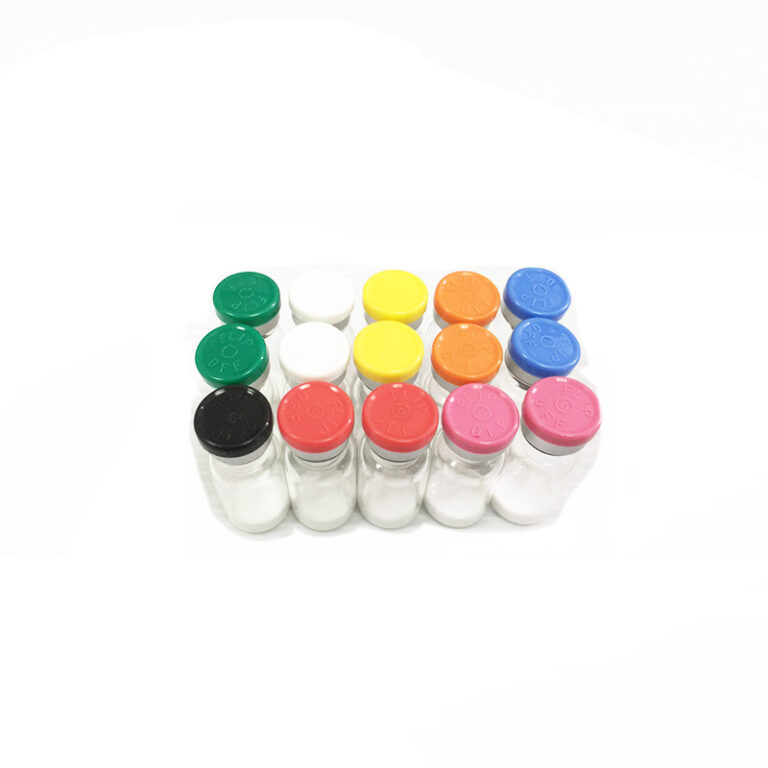


 Retatrutide LY-3437943 benefits in weight loss 17.5% in 24weeks
Retatrutide LY-3437943 benefits in weight loss 17.5% in 24weeks Type 2 Diabetes Treatment Semaglutide 10mg for Healthy Weight Loss
Type 2 Diabetes Treatment Semaglutide 10mg for Healthy Weight Loss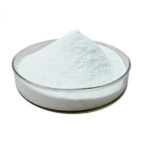 Buy MK-677 powder for sale ibutamoren sarm price bodybuilding mk677 CAS:159752-10-0
Buy MK-677 powder for sale ibutamoren sarm price bodybuilding mk677 CAS:159752-10-0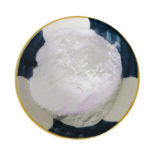 RAD140 stack: 99% Purity Sarms RAD-140 for sale
RAD140 stack: 99% Purity Sarms RAD-140 for sale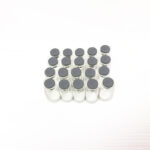 Neuroprotective peptide PE22-28 in mood depression and weight loss
Neuroprotective peptide PE22-28 in mood depression and weight loss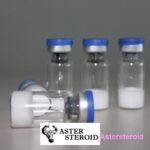 Peptide Alarelin acetate activated GnRH receptors to increase LH and FSH levels
Peptide Alarelin acetate activated GnRH receptors to increase LH and FSH levels FOXO4-DRI anti-aging and increases testosterone levels in men
FOXO4-DRI anti-aging and increases testosterone levels in men Nootropic Adamax vs Semax enhances cognition and post-exercise recovery
Nootropic Adamax vs Semax enhances cognition and post-exercise recovery Peptide Slu-PP-332 Lose weight and promote performance
Peptide Slu-PP-332 Lose weight and promote performance Peptides MOTS-c in bodybuilding and anti-aging use and benefits
Peptides MOTS-c in bodybuilding and anti-aging use and benefits